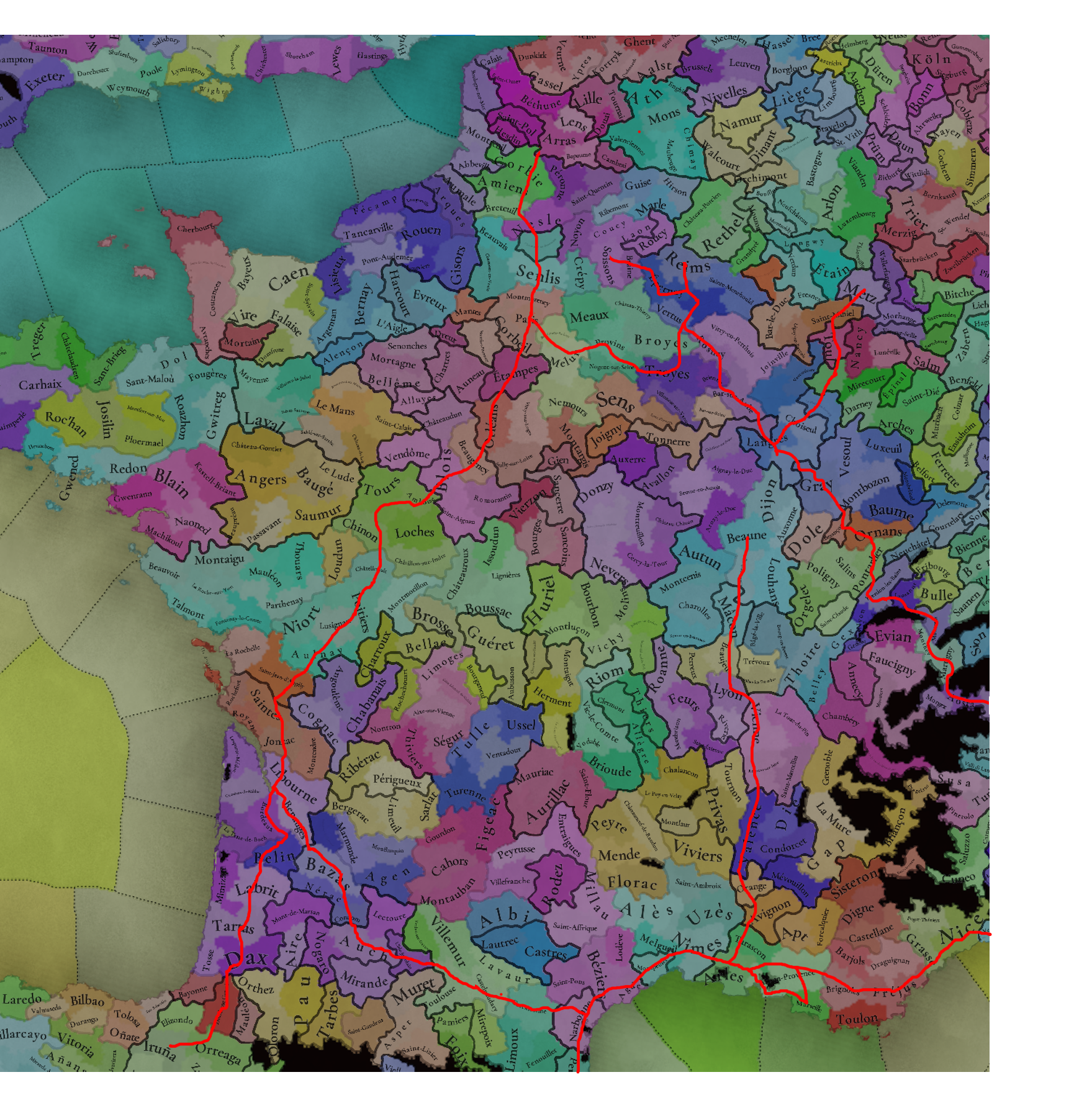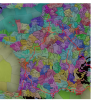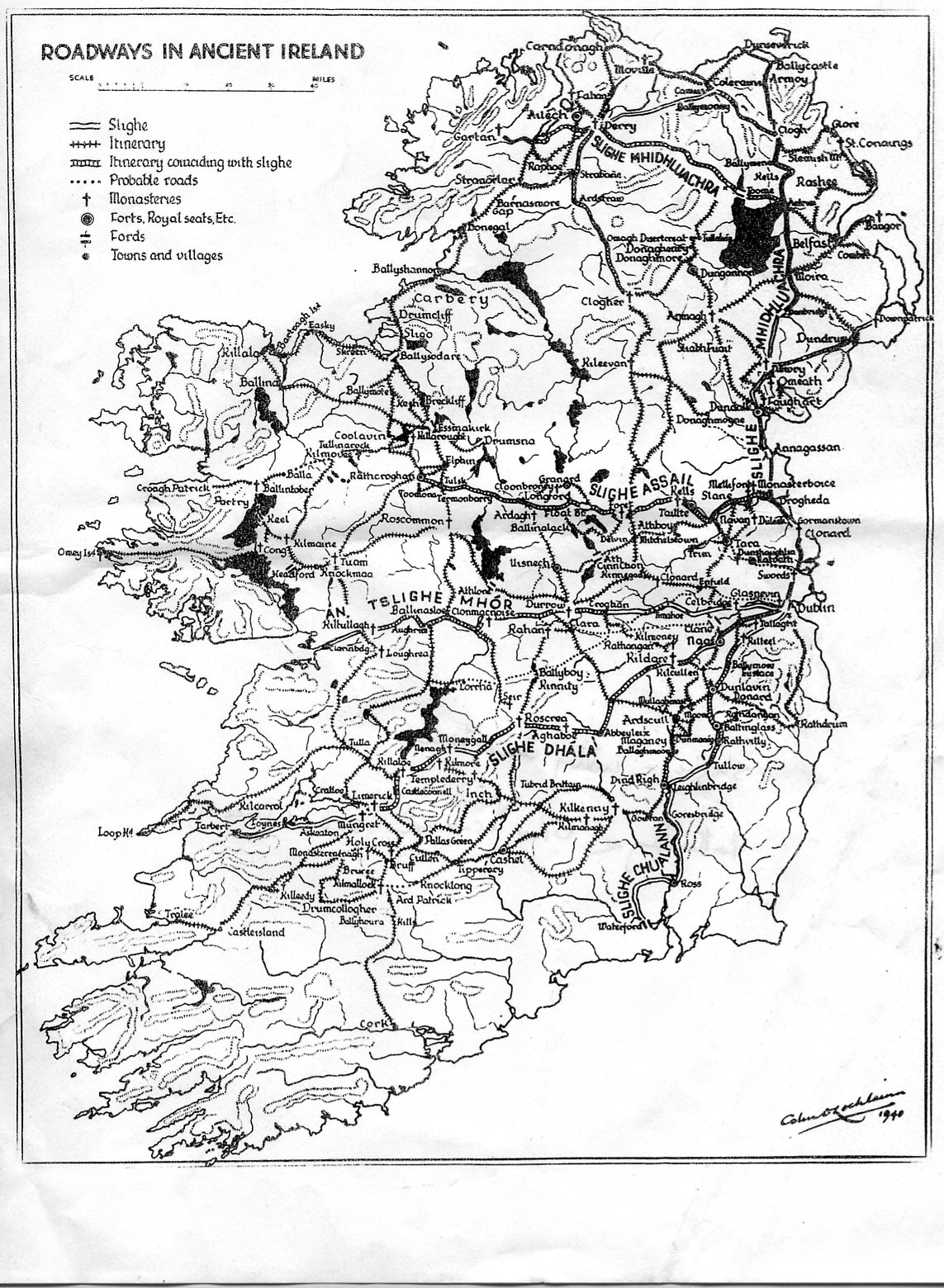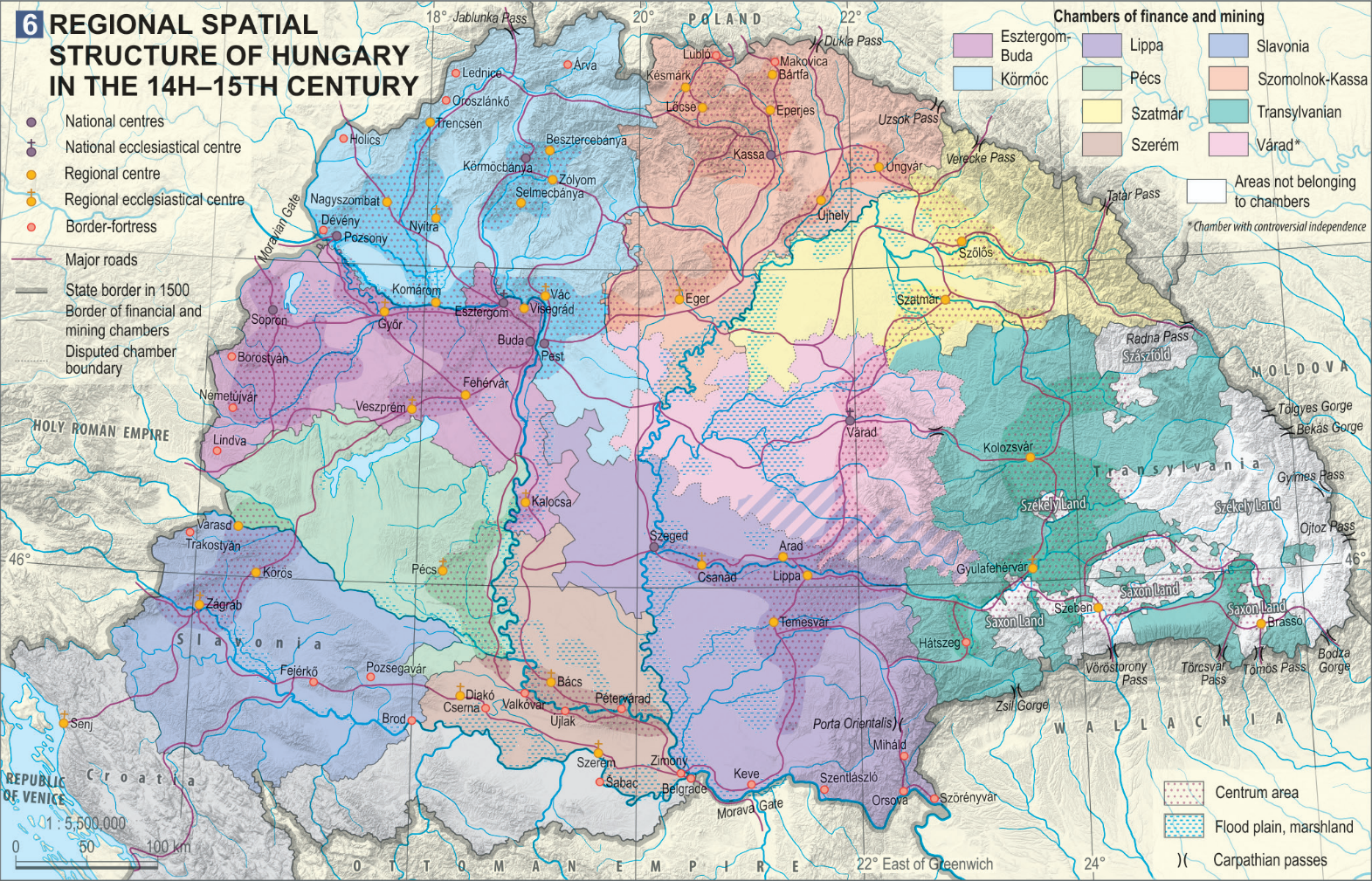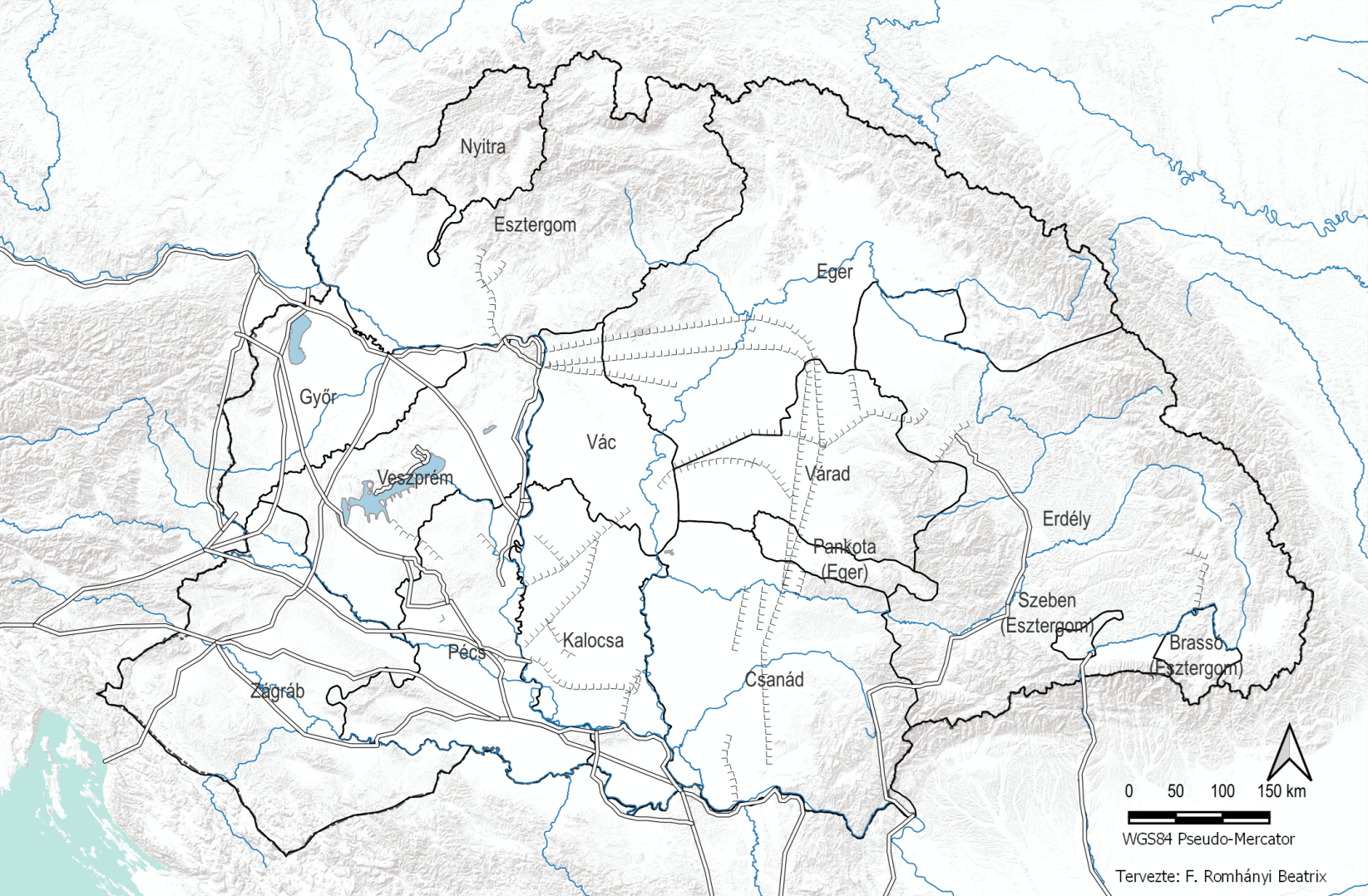Ignoring local use, there's a reason so many trade caravans preferred to move goods via baggage animals rather than carts in most of the world. There are always "roads" everywhere people live formed by simple desire paths, but if "road" represents something maintained well enough for long distance trade, they would be much rarer.
Dirt roads are unimpressive (I disagree, have you ever tried to maintain one?), but gravel roads? Think about the era and the tools they had to move the massive amount of rock required to make a gravel road worthy of the descriptor and it only gets worse if you try and cobble them like the Romans did. Even today, maintaining gravel roads is a major expense for rural areas rural parts of the US. During the game period, these would have been part of the corvee system that required local peasants to do unpaid labor for the local lord so they would have certainly been quite nice near the cities and large towns surrounding them, less so over mountains and other less populated areas. It just takes a relatively wealthy state with pretty high state capacity to build an maintain what most people think of when they hear the word "road," which is what made/makes the Roman roads such an important and impressive part of history.
Even maintaining proper dirt roads means digging and maintaing ditches entirely using human labor and the rather basic shovel of the era. Not knocking the shovels, either, but I've done a lot of digging using modern solid steel shovels and the thought of trying to do it with a wooden shovel sheathed with iron for the blade? *shudder* You couldn't even properly sharpen the blades, they'd always be much thicker than even a dull modern shovel.


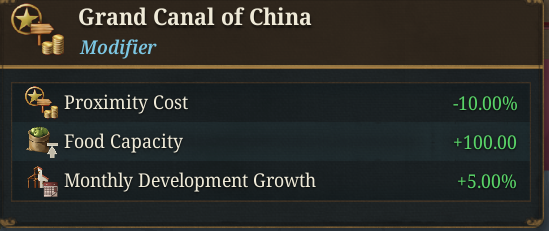

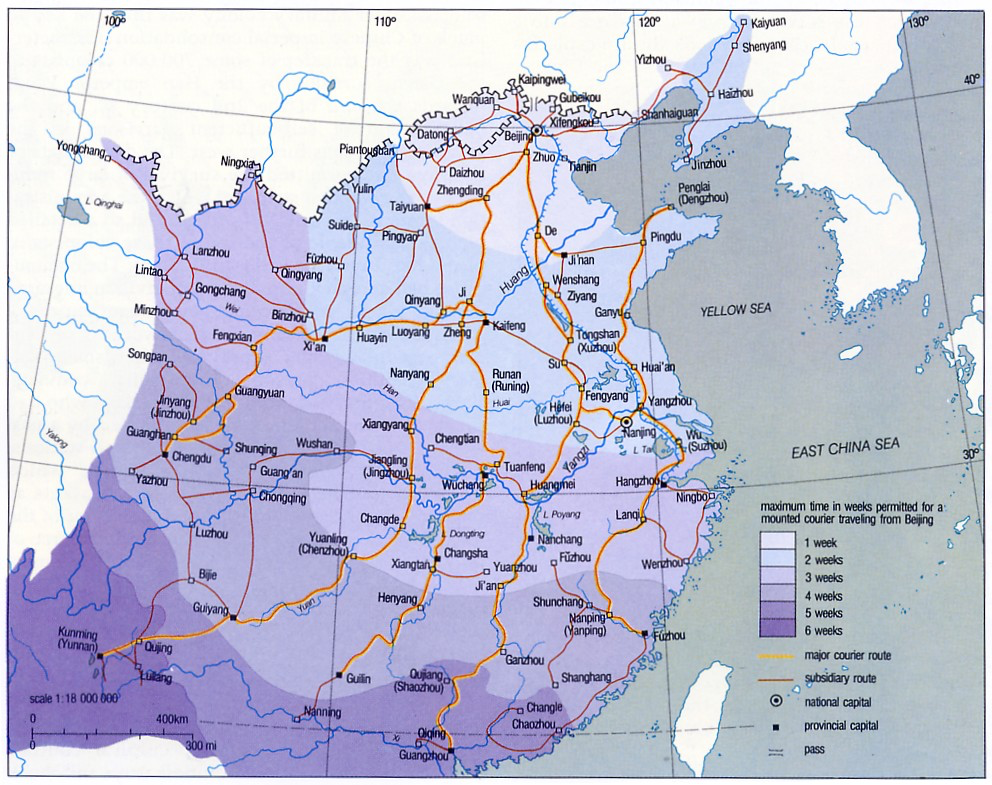
.png)
